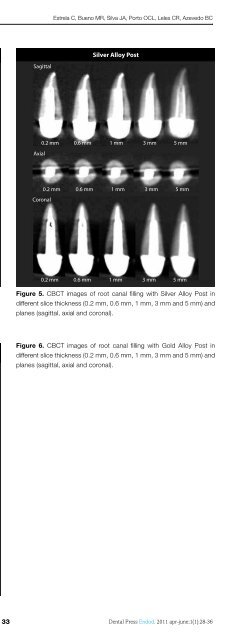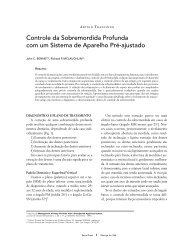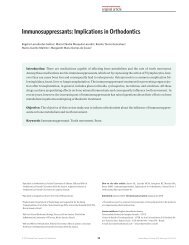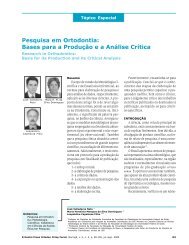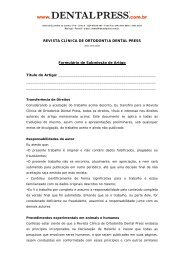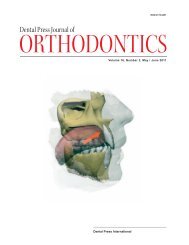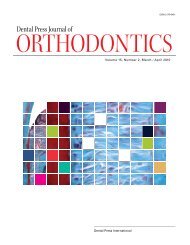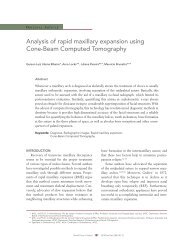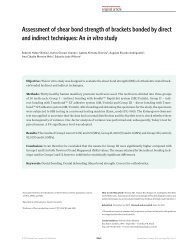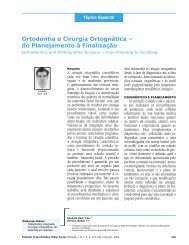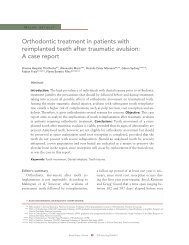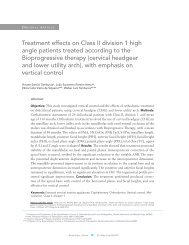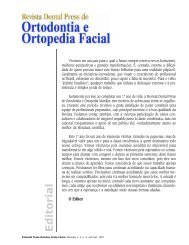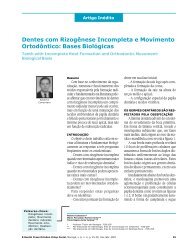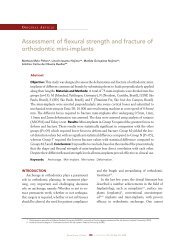Dental Press
Dental Press
Dental Press
You also want an ePaper? Increase the reach of your titles
YUMPU automatically turns print PDFs into web optimized ePapers that Google loves.
Souza RA, Figueiredo JAP, Colombo S, Dantas JCP, Lago M, Pécora JDis subjected to the rules of instrumentation, particularlyto the recommendation that mechanical actionshould be ensured by physical contact of the fileswith the canal walls.Still, it is important to bear in mind that numbersin endodontics should be considered as references,and should not be viewed as absolute requirements.Regarding instrumentation of the dentinal canal, itsanatomy and the characteristics of the instrumentsemployed should guide the principles of root canalinstrumentation. Likewise, these same factors shouldbe considered when performing instrumentation ofthe cementum portion of the canal. In other words,this step of endodontic therapy should not follow rigidpre-established principles, but rather, each clinicalsituation should be individually examined.It should be remembered that it was not the aimof this study to analyze other anatomical aspects,such as the diameter of the apical foramen or itsdistance to the root apex. Our goal was solely toidentify the location of the foramen in relation to theroot apex.ConclusionWe concluded that lateral emergence of the apicalforamen is more common than foramen emergenceat the root apex in maxillary central incisors and thatthis anatomical characteristic may interfere with foraminalfile size determination. Further studies shouldbe carried out in order to analyze the location of theapical foramen and its relationship with foraminal filesize in other groups of teeth.© 2011 <strong>Dental</strong> <strong>Press</strong> Endodontics 67<strong>Dental</strong> <strong>Press</strong> Endod. 2011 apr-june;1(1):64-8


